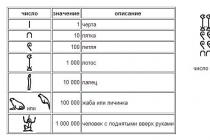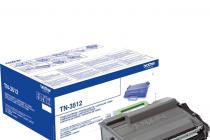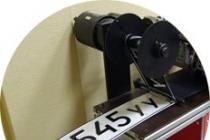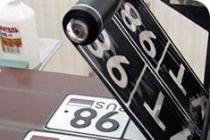The use of sunlight to charge batteries has long ceased to be a subject for science fiction books and is effectively used in modern world... The solar charger can easily charge MP3 players, laptops, Cell Phones and smartphones, which can be very helpful in situations of sudden power outages or being away from power sources.
The solar charger is very easy to use: just place it in direct sunlight and connect the gadget and portable device will charge.
The principle of its operation is quite simple: sunlight falls on a special panel that absorbs it, after which the energy is processed by the device into an electric current and supplied to the built-in power source.
Such devices have a number of advantages: they are quiet, environmentally friendly, durable, do not require fuel and generate electricity for free.

Varieties
If you decide to buy an external Charger on solar panels, for a start it is worth deciding where you plan to use it.
This could be:
- Charging mobile phones, smartphones and other handheld devices. To recharge your phone in case of force majeure, the smallest charger will be enough for you, but if you want to use all the capabilities of your mobile devices far from civilization, then you should choose a charger with a higher battery capacity.
- Charge laptops or tablets. For tablets with an outgoing voltage of 5 V, almost any device is also suitable, but with gluttonous laptops it is more difficult - when buying a charger, you need to make sure that the output voltage is not lower than the voltage of your laptop. At the same time, charging will be able to restore the energy of a smartphone, camera, etc.
- Chargers for summer cottages and campgrounds. The most powerful chargers with built-in AC outlets that can power household or medical equipment.
Also, there are chargers with and without a battery. When a battery is present, the convertible solar energy charges it, after which it charges your gadgets. In its absence, the sun's rays, transforming, directly charge the equipment.

Criterias of choice
So you need a solar charger - how do you choose the best value for money?
To do this, you need to follow simple instructions:
- Explore specifications charger and compare them with the parameters of the gadgets that you are going to charge.
- Check the compatibility of the connectors of the charger and the connected devices, as well as the presence of additional plugs and adapters.
- Explore additional functions and select the appropriate ones. Many models are equipped with a built-in flashlight, devices with Bluetooth functionality and even a radio are available.
- Enjoy the compact design, weight, and ease of use and portability.
- Decide on the choice appearance and device design. There are also various options for the execution of solar-based chargers: in a rigid case, flexible, shockproof, waterproof, as well as devices with a buffer battery.
- Choose the one that suits the price. It should be borne in mind that the main pricing factor is the power of the device.

Important points of use
There are a few things to be aware of when using a solar charger to help you get the most out of your device and extend its useful life.
The performance of a solar panel can be affected by factors such as:
- Panel area. With a larger area, energy is generated, respectively, more.
- Cell type. The highest productivity is distinguished by polysilicone and monocrystalline elements.
- Cloudiness increases the storage time in the battery.
- If the panel is incorrectly positioned in relation to the sun, this can also significantly reduce the speed. You can choose the most suitable place for the panel location using a miniature light intensity indicator; in its absence, the general rule applies: vertical panel placement is more successful than horizontal one.
- For constant recharge desired device you can attach the charger to your backpack. But do not forget that he will work only under direct sun in open areas - in the forest more often there will be no sense from him.
- The charging time of a connected gadget is determined by the output power of the battery.
- Charging time with photocell is shorter than when used normal charging from the electrical network.
- When using a solar charger, you should control the temperature: it is undesirable to overheat it - on a too hot day, it is advisable to periodically put the charger in the shade. Also, too high (or low) temperature level can significantly reduce the capacity of the battery.
- During storage, it is advisable to recharge the battery from time to time in order to avoid an increase in the static discharge coefficient.
- Before starting to use the charger, it is recommended to carry out a training cycle 2-3 times (fully charge - completely discharge).

How to do it yourself
Some prefer Alternative option, such as charging from a solar battery on your own, especially since it is not so difficult, not expensive and interesting.
Instruments
To make a solar-powered charger with your own hands, you will need tools:
- tweezers;
- pliers;
- glue gun;
- blowtorch;

Materials (edit)
And also prepare the following materials:
- solar panel 5 V or more;
- lithium ion battery at 3.7 V;
- battery charge control circuit;
- DC step-up circuit (USB);
- two 2.5 mm connectors - one with panel attachment, the other with a wire;
- diode 1N4001;
- the wire.
And auxiliary materials for construction: electrical tape, heat shrink tubing (preferably), double-sided foam tape, solder, box (tin or any suitable).

Stages of work
Having prepared everything you need, you can start making your own solar-powered charger.
The manufacturing steps are as follows:
- Wire connection.
- Preparing holes for connectors in the housing.
- Charge controller connection.
- Connecting the battery and USB circuit.
- Meticulous wire insulation.
- Accommodation electronic components in the case.
If you made a solar charger yourself, you know that it also charges from sunlight or via a mini USB port. During the charging process, the LED should light up in red, and upon completion - in blue.
Now you can not only choose the best option charging, but you also know how to make a charger from a solar battery that will help you save electricity and not be left without communication and other convenience of modern technology in extreme situations, and just on vacation.
Video
You can learn more about the stages of making a battery charging from a solar battery with your own hands by watching our video.
For some reason, phone manufacturers do not want to release normal self-charging gadgets. The picture above is the Samsung E1107 phone. According to the manufacturer, under ideal conditions it can be fully charged from the sun in 55 hours. But there are no such ideal conditions in Moscow.
There are more efficient solar panels and lower consumption phones. For example, with a black and white small screen Alcatel ot-117. I have matured the desire to try to make a solar panel for the phone myself and place it on the back side, on the battery cover.
I have a good old friend Alcatel ot-117:

Finding a solar panel at a reasonable price with normal efficiency turned out to be unrealistic in Moscow. I bought a Chinese charger.
I bought this charger based on the characteristics. The manufacturer promised a full charge in 14-16 hours under the sun of the built-in 500 mAh battery, i.e. like on my phone. This was fine for me, since the phone discharges in 4 days and the power of the solar panel, even taking into account not ideal conditions, should be enough so that the phone does not need to be charged from standard charging generally... And all this miracle costs 150r on aliexpress. Cheaper than buying a solar panel separately in our stores. Moreover, this solar panel is quite efficient.
And so experiment
Had to cut the NOKIA microusb cable:
Got microusb on one side and 4 wires on the other:

The solar battery must be connected with a red wire with a red (plus with a plus), and the second solar battery wire (I have a blue one) with a (-) sign with a black wire. Also, to start charging, you need to close the white and green wires. Wiring diagram:

Received this sample for experiments:

It turned out that the phone charges from it, lying on my office desk in sunny weather in 2 working days, and in cloudy weather - in 3 working days. I work from 8 am to 5 pm. The office windows face east. I consider the experiment to be successful. All that remains is to solder everything under the case directly to the microusb connector and place it in the cover of the battery compartment. There is no need for any additions in the form of diodes and other radio components, since there is no self-discharge when connected to the microusb connector of the phone, and the phone is charged naturally. The charging process is displayed on the phone screen. It's amazing how easy things are.
To help I spread the microusb pinout figure:

This is what the assembly looks like:
The solar panel will be attached with double-sided soft tape:
I ordered a more powerful solar panel from ebee. I also plan to connect it via an SS14 diode (costs 5 rubles) directly to the battery contacts without soldering, simply by holding the contacts. Later I will lay out the connection diagram. The panel will have to wait 3 weeks. It is 2 times more effective than this one and costs only 100 rubles. I decided to do this because of the constant appearance of an annoying message about connecting and disconnecting charging.
Features:
Max. power: 0.5W.
Max. current: 100mA.
Max. voltage: 5V.
Size: 8.6cm x 3.8cm x 0.2cm.
Lovers active rest often face the problem of discharging the batteries of mobile phones, navigators, tablet PCs and other equipment necessary for a hike. Spare batteries are not the best way out. We suggest trying to make a solar-powered charger with your own hands. This way you can not only ensure uninterrupted communication while traveling, but also save a lot of money.
Determine the charging parameters
To determine the power of a solar battery, you need to know its purpose. In order to charge the mobile phone and navigator, a 6 V voltage source with a power of about 4 W. is sufficient. Tablet PC, camera and laptop require 12 V voltage and 15 W. Making a solar battery yourself is a troublesome business, it is easier to purchase a ready-made folding structure in a radio store.
It should be borne in mind that the charging voltage (charger) must correspond to the parameters of the battery of the device being charged. The charging process will not take place when the charger voltage is lower than that of the battery. Excess leads to destruction of the plates and failure of the battery.
Diy solar charging circuit
A solar-powered charger with your own hands can be assembled according to a simple scheme. The GB2 accumulator is connected to the terminals of the same name GB1 of the solar battery. VD1 (Schottky diode), for example, MBR140 or 1N5817, 1N5818, is connected in series in the circuit so that the battery is not discharged through the solar battery. Its principle of operation does not differ from other semiconductor devices using p-n principle transition, but based on the use of the transition "metal-semiconductor".

A diode of this type has an advantage over other diodes: the voltage drop during its use does not exceed 0.4 V. For a 6V battery, one diode is enough. The dash on the diode body indicates the cathode, the other output is the anode. The circuit can be simplified by purchasing a battery with an already built-in flyback diode.
What you need to make your own charger
So, for the manufacture of the charger you will need: a solar flexible battery, a two-core copper cable with a cross-section of 0.75 mm², a Schottky diode, two PLUG plugs (or similar) for the device of XS1 and XS2 connectors, two JACK-sockets, a plug such as Charger from a 220 V network and hot melt glue. You can use headphone jacks to make the connectors. If you need to charge AAA or AA batteries, you need to purchase a special container. These parts are available on the radio market or in a special store. The plugs for charging modern mobile phones are unified for micro-USB. In the event that an old-style plug is required to charge the cellular terminal, you should purchase a universal adapter, which should not be included in the circuit on an ongoing basis: in the future, these will still not be used.
Build process
Do-it-yourself solar-powered charger assembly is quite simple. The two-core cable must be soldered to the solar flexible panel outputs and the plug to the other end. If the solar panel is already equipped with an output connector, you need to select a mating part for it to connect with the rest of the device.
The next stage is assembling a container for charging AAA (AA) batteries. It is advisable to use a case for three batteries: two places in it will serve as intended, and in one it is necessary to assemble a circuit with a Schottky diode. A two-core wire, limited by a plug, is inserted into the case, fixed with hot melt glue and connected to the circuit. For reliability, the entire compartment with the circuit can be completely filled with hot melt glue.

If you need to charge only laptops, tablets, cameras and mobile devices, the diode circuit can be assembled in the XS2 plug housing, where hot glue should also be used for fixing. For the convenience of switching, it is desirable to make an adapter cable, limited by the appropriate connectors. If it is necessary to control the current strength during charging, an ammeter can be sequentially connected to the circuit, which can be used as the cheapest Chinese test 
Greetings to all radio amateurs! AndReas is in touch today and I will tell you about a useful device for all your mobile, portable, portable and other gadgets that you use every day ... no, every minute you use it. And we will talk about solar charger (or in another way, Power bank) , which is quite realistic and inexpensive you can do it yourself... And then you can charge your mobile phone, smartphone, iPhone, tablet and other "-phones" while out of the house, in the absence of full access to a 220 volt network or to another charger.
Needless to say, such devices are now very much in demand and popular. For those who do not have a soul to design this portable Power Bank or who simply do not want to mess around, there is an opportunity at the end of the article. I'll even show you a photo of him now:
Do it yourself
So, we need the following elements:
- Solar panel for 5.5 ... 6 volts, at least 160 mA (more is better) - 1 or 2 pcs.;
- 18650 lithium battery from, say, an old laptop battery (there are several of them in it);
- Diode 1N4007 - 1 or 2 pcs.;
- Resistor 47 Ohm;
- Slide switch;
- Charger board for lithium batteries with microUSB and built-in protection (more on that below);
- 5 volt DC-DC converter board with USB output (more on that below).
Of all the elements, we, perhaps, you only have to buy three - a solar battery and the last two from the board list... All this stuff can be ordered directly from home on the famous Chinese consumer goods Aliexpress, or on eBay. Products under the links: solar panel, charger board, DC-DC converter board. All items are very cheap. Everything will cost 300 rubles with a penny at the time of this writing. There, at the same time, you can look at the case of our future Power Bank.
Now let's go directly to the assembly (you already have the missing elements, don't you).
The wiring diagram for all these components is very simple:

The diode is soldered to one of the terminals of the solar panel to protect it and the input circuit from reverse polarity and the flow of current from the battery to the battery when connected in parallel.

The 47 ohm resistor is soldered to USB output DC-DC converter to be able to charge some smartphones such as iPhone.

Our self-made Power Bank will be able to charge both from a solar panel (or several connected in parallel), and via a micro USB connector from a computer or laptop, or a suitable charger. All the nuances are indicated, now you can start assembling all the components into one device.
The assembly process is shown in the photo below.








That's all! Simple, practical and convenient, and inexpensive.
Buy ready-made Power Bank 20000 mAh
For those who want to buy a ready-made portable universal charger equipped with a solar battery and a built-in battery, I give this opportunity.
Technical characteristics and conditions of purchase / delivery:
Dimensions: 120 x 75 x 22mm
Case: plastic and stainless steel
Output voltage: 5 V 1, A, 5 V 2, A, can charge 2 gadgets at once
Charge: solar energy or 220 V network
Battery: lithium (400-600 full charges)
Solar energy conversion: 95%
Input: two USB connectors and one micro USB
Working temperature: from -20 to + 40 ° С
Black color
Weight: 240 g.
Great for: netbooks, laptops, tablets, game consoles, phones, smartphones, iPhones, video equipment, MP3 players, digital audio equipment, textbooks, readers, e-readers, mobile headsets
Optional: built-in LED flashlight and adapter cable included
Delivery: to any region of Russia and to the CIS countries (including Ukraine and Belarus) up to 12 working days (average price 350 rubles)
More and more connoisseurs of outdoor activities prefer to spend their holidays and weekends closer to pristine nature. But it is difficult for a modern person to give up the benefits of civilization - who among us does not take a mobile phone, laptop or camera on a trip?
But if you have a solar charger in your luggage, the problem with the power supply of the devices will be solved. It remains only to figure out how to choose the right device. The article presented by us will provide effective assistance in clarifying all issues.
These chargers are capable of converting solar energy into direct electric current. They can work with various models of navigators, players, laptops, phones, cameras and other portable devices.
But the charging time directly depends on the power of the device itself and the type of discharged device, therefore, in order to choose a truly practical and versatile device, it is worth understanding its characteristics.
Image gallery
A compact device that collects, accumulates, stores and transfers the charge obtained from the processing of solar energy, will provide independence from power sources
If the tourist's outfit has a charger that uses sunlight to generate electricity, extreme situations are excluded
A small-sized device independent of the power supply will easily charge a mobile phone, laptop, tablet, portable media system
The solar-powered charger will charge your mobile devices in minutes. It itself receives energy almost continuously.
Mobile solar inverter and battery
Charger in the outfit of tourists
Charging for continuous communication
Smartphone charging process
Design features of the device
The device itself consists of a crystal panel, a charge / discharge level controller and a solar-to-electrical energy converter.
Some models are also equipped with a buffer battery of several lithium cells, which allows the device not only to convert, but also to accumulate energy in order to release a charge even in the dark.
Just a couple of years ago, solar chargers were quite expensive devices, but today they are a mass product with an affordable price.
Benefits of solar chargers:
- Universal - adapted for various devices (there are USB connectors on the case, and most models are additionally equipped with special adapters for various types of electrical engineering).
- Takes up little space in your travel luggage.
- There is a wide selection of shapes, colors, sizes and capacities to suit different needs and aesthetic tastes.
Well, the most significant drawback for all solar charges is the long time it takes for them to accumulate "power". In addition, it should be understood that if almost any model can cope with the power supply of a mobile phone or camera, then an active "absorber" of energy such as a laptop will already require an impressive power of a solar battery and a capacitive battery.
How the device works
Portable solar-powered chargers are stand-alone systems that can recycle energy from both beams and from the mains, fluorescent lights or a computer. Moreover, many models do not need an intense sun - they accumulate a charge even on cloudy days, although the efficiency, of course, drops (from 20 to 70%).

If you buy a device with the ability to connect to the mains, you can significantly save time on accumulating charge in cloudy weather.
The device works like this: the crystals on the panel absorb solar energy, the converter "converts" it into an electric current, which is fed to the power source. When a mobile phone or other device is connected to this source using a cord, the stored energy gradually flows into the discharged device.
Types of solar charging
As for the appearance, here the manufacturers have already tried not only to diversify the colors and shape of the devices, but also to make the device as convenient as possible for use in various situations. Let's consider the most popular options.
Monoblock- a compact device made of a panel and a drive enclosed in a solid metal or plastic case. Such a device will "save" a dead phone on a beach or a picnic and will not take up much space in a regular bag.

Monoblocks are convenient for everyday life - they do not take up much space and can be charged not only from the sun, but also while working on a laptop or computer
Flexible panel- slim folding or unfolding panel with photocells. It takes up little space in your luggage, and it weighs much less than its solid case enclosed competitor. But, despite the decent "coverage" area, flexible plates accumulate solar charge almost twice as slow as monoblocs.
In addition, most panels operate only from direct sunlight, without storing energy for future use - they do not have a built-in battery. However, you can always complete your charging with an external storage device of the required power.
So flexible panels are a good option for solving the issue of recharging low-power devices during "stationary" rest - in the country, fishing, with a tent. But for a hiking trip, it is better to look for another option.

While driving, the flexible panel can be compactly folded and placed in the trunk or attached to the roof of the car, and at a halt - simply spread out in the sun
Built-in charging- the device consists of, which are attached to the outside of bags or backpacks. They allow you to recharge devices directly on the way or to accumulate a charge in the built-in battery.
And such an accessory can also be used for its intended purpose - to carry any objects or the same electronics, which is very convenient for those who are fond of hiking or working in the open air.

Although "energy backpacks" look attractive and stylish, but with the same success you can temporarily attach to the bag and any other type of charging (many models are even equipped with special carabiners) and not worry about the safety of the device during rain or cleaning
Folding beds- it can be as a few flexible panels, compactly folded "stack", and a variation of two monoblocks, enclosed in a rigid case in the form of a folding book.
The main purpose of such a device is to minimize the "capture" of the usable area in the volume of your luggage and to increase the efficiency due to the greater number of photocells. A nice bonus - most models are equipped with mounts for a backpack or car glass.

The size of the "clamshell" can be selected based on your needs: to charge a mobile, a device the size of the phone itself is enough, but for laptops and tablets, even when folded, the panel will be no less than an A5 sheet
But regardless of the design, all solar chargers work according to the same principle, so we will consider important technical nuances that will help when buying a device.
How to choose the right option?
To begin with, it is worth deciding on the number and types of devices that you plan to charge from solar charging. The power of the device and the type of output port depend on these parameters.

If your device has several USB port s, you can simultaneously connect and charge various devices, as long as the battery power allows
The characteristics of various devices can be clarified by looking at the instructions for their operation, and in some devices the operating voltage is also indicated on the charger that is included in the kit, so it will be easy to navigate. In extreme cases, the required adapter can always be purchased.
Basic parameters and nice additions
The time it takes for the device to power up various devices depends on the characteristics of the charging current. This indicator is measured in amperes and is indicated on the ports of the device.
Values:
- 1 amp - designed for mobile phones, electronic cigarettes, watches, players.
- 2 amperes - suitable for tablets, smartphones, digital cameras and video cameras.
- 2.5-3 amperes - will cope with charging netbooks and laptops.
It is also important to know the voltage at the output, because the devices being charged can surpass the capabilities of solar charging in power. So, for most phones and simple tablets, an output of 5 volts is required, for digital cameras and gaming gadgets - 9, and for laptops and car refrigerators - 12-24.
But still, the main characteristic of the charger is the power of the solar panel. The battery charging time directly depends on this indicator. And here everything rests on the characteristics of the light-catching panels.
For example, cells with a power of 5 W (standard budget option) will have a current of 900 ma hours, and 10 W - 1500 ma. That is, to charge the phone from solar charging at 5 W, it will take 2-3 hours, but a panel with a capacity of 10 W can handle it in one and a half.

For powerful devices such as gaming tablets and laptops, it is better to buy foldable models of several panels that quickly generate a charge
In addition, devices with panels that do not exceed 2 W are only used to store the built-in battery. And in order to directly charge devices from sunlight, panels with a power of 3 W or more are needed.
Other important parameters:
- Battery availability- if the device does not have a drive, it will be able to work only while it is in an illuminated place. Devices with rechargeable batteries are capable of giving a charge at any time of the day, as well as being charged from other sources - a USB port of a laptop or an outlet connected to 220V.
- Photocell type- it is believed that monocrystals absorb the sun's rays more efficiently (their efficiency is at the level of 13-18%). For polycrystals, this figure is lower - about 10-12%. You can even distinguish them with the naked eye - polycrystalline panels have a dark blue tint, while their competitors are black.
- Interface- universal chargers from the sun are equipped with informative USB, where you can select the desired option depending on the type of discharged device. Some devices are also equipped with a sun intensity indicator, which will help determine the optimal location for a quick charge.
- Protection- a priori, all devices have a safety system that allows their operation in nature. But for fans of extreme adventures, it is worth looking for a device with enhanced protection against rain, dust, dirt, shock and other force majeure.
Additional features are most often represented by the "lantern" or "lamp" function. This may be relevant not only for outdoor enthusiasts, but also for motorists - when changing a wheel or repairing on a night road, bright light will become an indispensable assistant.
Of other bonuses, manufacturers can offer a USB hub or Wi-Fi hotspot... But, of course, any additions significantly increase the final cost of the product. And whether they are needed is up to you.
In terms of the intensity of shopping, the following models are in the lead:
Image gallery
Powerful enough charger easily fits into a bag or backpack. Able to charge two at the same time mobile devices on Android and iOS
Eight panels of the device generate 28 watts. Suitable for charging tablets and mobile phones. It will take 3 hours to charge a laptop battery with such a device.
The best option for charging a mobile phone and smartphone. Fits in your pocket without any problems. Produce a device in a shockproof waterproof case
Spectacular charger in the form of a cap with a visor, equipped with mini solar panels. The most convenient and practical, but only suitable for charging mobile phones
Anker 21W 2-Port USB Solar Charger
ALLPOWERS 28W Foldable Solar Panel Laptop Charger
Portable solar powerbank
SOLSOL Solar Hat
Devices with a built-in battery must be fully charged before first use, and not in the sun, but from the mains. Then connect any device to the charger so that it receives energy and discharges the drive.
After that, the panel can be exposed to the rays and compensate for the lost charge. For models operating directly from the sun, this rule does not work - they can be immediately installed on illuminated areas and connected to devices.

Most solar chargers are designed to operate in temperatures ranging from -20 to + 45 degrees, but there are also special models that work in extreme climates, only they are made to order
To maximize the efficiency of solar charging, we recommend the following:
- Position the device so that the beams strike the panel at a right angle. Even if the sun is not at its zenith, you can give the charger the correct position by raising it at an angle of 40 degrees with the help of some kind of support. So you can collect 20-30% more charge than if you lay the panel horizontally on a lighted place.
- Use the device together with the drive, and not only on halts, but also during a trip by car or on a hike. Such a tandem will be able to collect energy for 2-3 phone charges even in cloudy weather without direct sunlight.
- Keep in mind that in most folding appliances, the panels are connected in series, so it is important that all elements are evenly lit. For example, even if the shadow covers only half of the first of the four panels, the battery power will drop in half.
- In order for high-capacity batteries to reach the declared parameters, it is recommended to "overclock" them - completely discharge them, then charge them to 100%. And so 3-4 times.
- For a long break in work (a month or more), store the charger at room temperature. If this is a device with a built-in battery, it must first be charged to 50-70%.
And the last tip - even if the charging has begun to work worse or is completely out of order, do not disassemble it yourself, so as not to damage the system elements and the case itself. The disassembled device is automatically removed from the warranty, so it is better to contact an authorized service center or supplier.
How to make a charger with your own hands?
Although modern chargers have ceased to be premium devices and are quite affordable for the average consumer, if you want to save money, there is always the opportunity to make such a device yourself.

An example of a home-made device in a hard case from a metal can, equipped with a USB connector and an energy converter for charging low-power devices
To make a simple solar charger, you need to purchase several basic elements:
- poly or monocrystalline panel;
- battery holder;
- Schottky blocking diode;
- socket for connector;
- a charge controller (however, if the charging will generate 0.5-5V, you can use a cheaper 5V step-up converter instead of the controller).
As for the panel itself, here you need to make a small calculation of the number of elements, based on the power of the device that you plan to charge.
For example, if the charge current for a battery is about 10% of its capacity, then a current of 2A is needed to charge 20,000 mA, and it will take about 14 hours to power the device. If the current is doubled to 4A, the recharging time will be reduced to 7 hours.

Replacing the controller with a converter will allow you to assemble the charger even with the help of a low-power battery from a solar lawn lamp - all the same, we will get the required 5V at the output (although it will take a long time to charge)
Depending on the parameters of the current for future charging (2 or 4A), crystalline elements are also selected. Usually, 1 part generates about 0.5V, that is, to get at least 5V, 10-12 elements are needed.
Then they need to be sequentially soldered together. If a panel from a flashlight is used, then even a standard 70 * 70 cm can produce from 2.5 to 4.5V, so it is better to check with a voltmeter.
The final stage is to enclose the homemade charger in any suitable frame (even a candy can will do) and equip it with a USB connector. Then a blocking diode must be soldered to the connector, as well as the wires from the solar panel to the converter and holder according to the diagram below.

The Schottky diode is necessary so that when the device is turned on, the batteries are not discharged through the solar battery. You can buy it, like other components, on radio markets or on the Internet.
It remains to check the operation of the device in the sun with any discharged device. If everything is in order, you can use the appropriate adapters and charge various devices.
Photo instruction for independent craftsmen
You can easily assemble a compact charger with a USB port to power your phone with your own hands. All components are commercially available, as a last resort they can be written out. A homemade product will cost dozens of times cheaper than a factory-made product, especially if it is widely advertised.
Image gallery
All components for assembling a homemade charger that generates electricity when exposed to sunlight or an ordinary light bulb can be purchased at online and offline retail outlets.
The home craftsman will need a tool that is at the disposal of almost every owner. You need to stock up on a soldering iron, wire cutters, a drill, a stripper to remove insulation from wires, and a glue gun. It is advisable to invite an assistant
If you intend to recharge more serious and power hungry devices than a smartphone, it is better to buy a lithium-ion battery and a controller for it.
In the case of making a charge for servicing only a mobile phone, in a homemade scheme, you can use blocks of AA batteries, 2-4 pieces each, or a nickel-metal hydride battery
The work will require double-sided adhesive tape, solder, electrical tape, thermal tubes to isolate the connections
A compact version of the solar panel can be purchased ready-made or you can build a homemade panel from series-connected mono- or polycrystalline photocells
All functional components of the portable charging system are housed in a hard case. It will need to cut out the outputs for connecting charged gadgets. Tin cans are ideal for these purposes.
The standard USB port, rated for 5V, will be connected through a step-up circuit. So it is necessary to reduce the voltage at the input to the battery to 3.7V
Homemade solar charging
DIY assembly tools
Li-ion battery with controller
Battery packs for low power devices
Consumables and tools for him
Small solar panel
Tin box for making the case
USB port for connecting a charged object














